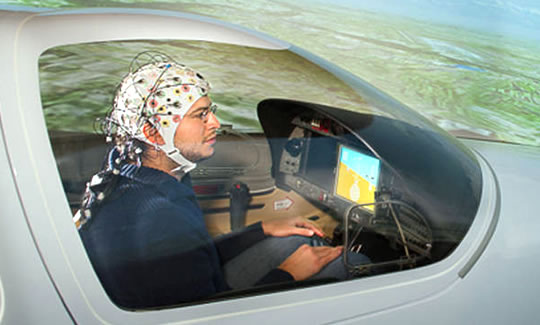Look Ma, no hands!
Could the pilots of the future only have to think their commands to control an aircraft?
Scientists working on an EU project called ‘Brainflight’ have now demonstrated that this isn’t as far-fetched as it sounds.
In tests they had seven people with varying levels of flight experience fitted with electroencephalography (EEG) electrodes, which measure electrical impulses naturally produced by the brain.
They were then sat in a flight simulator and instructed how to ‘think’ their plane around the skies.
The accuracy with which they followed the instructions was high enough to satisfy the requirements for a pilot’s licence.
Remarkably, some of the pilots were able to land the plane under conditions of poor visibility just using the power of their thoughts.
The Brainflight project relies on an algorithm developed by scientists at the Berlin Institute of Technology, which translates electrical potentials from the brain into control commands.
One of the problems the researchers now face is how to provide feedback to pilots.
Normally when a pilot moves the control column there is resistance as the loads increase on the aircraft — much the same as you can feel a car gripping the road through the steering wheel.
A method will need to be developed to provide a version of this kind of tactile feedback to pilots so that they know when they are pushing the aircraft beyond its capabilities.
Tim Fricke, who heads the project at Technische Universität München (TUM), said:
“A long-term vision of the project is to make flying accessible to more people.
With brain control, flying, in itself, could become easier.
This would reduce the work load of pilots and thereby increase safety.
In addition, pilots would have more freedom of movement to manage other manual tasks in the cockpit.”
Image credit: A. Heddergott/TU München

